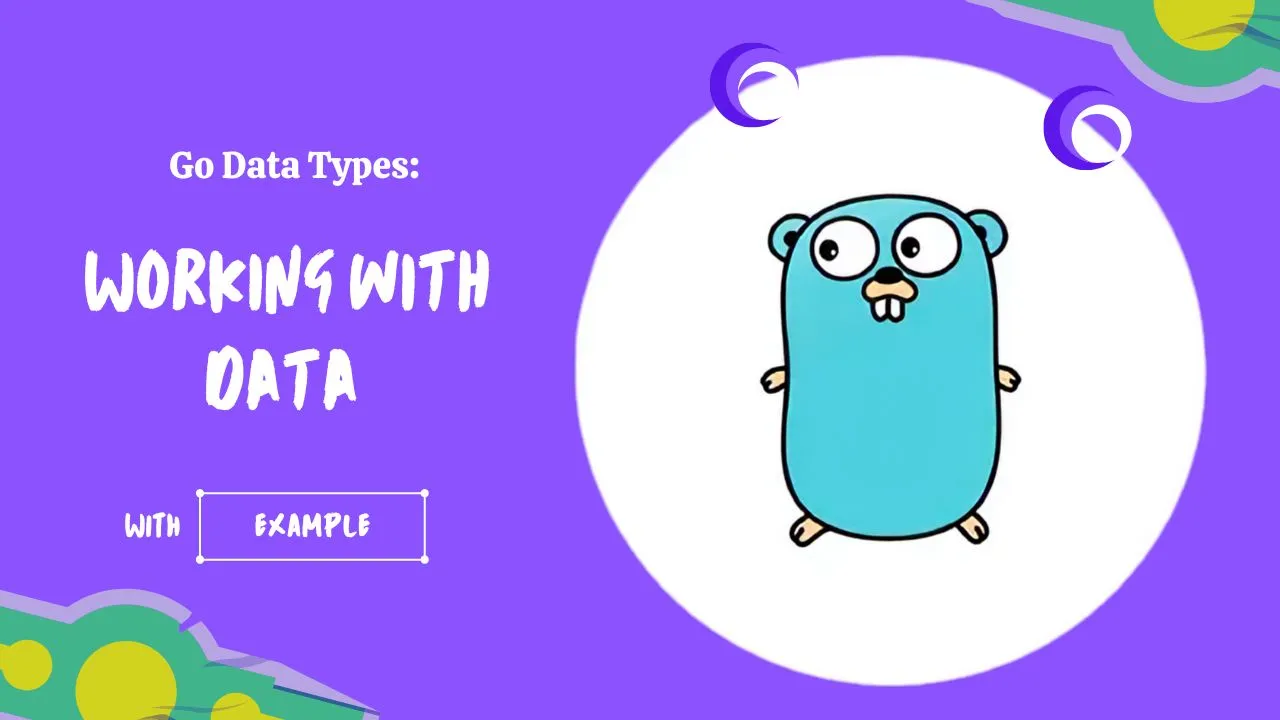Go Data Types: Working with Data
We use data types in Golang to determine the type of data associated with variables. For example,
var age intHere, int is a data type that specifies that the age variable can store integer data.
The basic data types in Golang are
| Data Types | Description | Examples |
|---|---|---|
int | Integer numbers. | 7123, 0, -5, 7023 |
float | Numbers with decimal points. | 20.2, 500.123456, -34.23 |
complex | Complex numbers. | 2+4i, -9.5+18.3i |
string | Sequence of characters. | "Hello World!", "1 is less than 2" |
bool | Either true or false. | true, false |
byte | A byte (8 bits) of non-negative integers. | 2, 115, 97 |
rune | Used for characters. Internally used as 32-bit integers. | 'a', '7', '<' |
Now, let's discuss the commonly used data types in detail.
1. Integer Data Type
Integers are whole numbers that can have both zero, positive and negative values but no decimal values. For example, 0, 5, -1340.
We commonly use the int keyword to declare integer numbers.
var id intHere, id is a variable of type integer.
You can declare multiple variables at once in the same line.
var id, age intIn Go programming, there are two types of integers:
- signed integer
int- can hold both positive and negative integers - unsigned integer
uint- can only hold positive integers
There are different variations of integers in Go programming.
| Data type | Size |
|---|---|
| int/uint | either 32 bits (4 bytes) or 64 bits (8 bytes) |
| int8/uint8 | 8 bits (1 byte) |
| int16/uint16 | 16 bits (2 bytes) |
| int32/uint32 | 32 bits (4 bytes) |
| int64/uint64 | 64 bits ( 8 bytes) |
Note: Unless we have a specific requirement, we usually use the int keyword to create integers.
Example 1: Understanding Integer Type
package main
import "fmt"
func main() {
var integer1 int
var integer2 int
integer1 = 5
integer2 = 10
fmt.Println(integer1)
fmt.Print(integer1)
}Output
5
102. Float Data Type
The float type is used to hold values with decimal points. For example, 6.7, -34.2
Keywords used: float32, float64
Here's an example,
var salary float64There are two sizes of floating-point data in Go programming.
| Data Type | Size |
|---|---|
| float32 | 32 bits (4 bytes) |
| float64 | 64 bits (8 bytes) |
Note: If we define float variables without specifying size explicitly, the size of the variable will be 64 bits. For example,
// the size of the variable is 64
salary := 5676.3Example 2: Understanding Float Type
// Program to illustrate float32 and float64 with example
package main
import "fmt"
func main() {
var salary1 float32
var salary2 float64
salary1 = 50000.503882901
// can store decimals with greater precision
salary2 = 50000.503882901
fmt.Println(salary1)
fmt.Println(salary2)
}Output
50000.504
50000.5038829013. String Data Type
A string is a sequence of characters. For example, "Hello", "Hey there"
Keyword: string
Here's an example,
var message stringIn Go, we use either double quotes or backticks to create strings.
var message string = "Hello World "
var message string = `Hello World`Example 3: Understanding String Type
// Program to create string variables
package main
import "fmt"
func main() {
var message string
message = "Welcome to Programiz"
fmt.Println(message)
}Output
Welcome to Programiz4. Boolean Data Type
The boolean data type has one of two possible values either true or false.
Keyword: bool
var isValid boolExample 4: Understanding bool Type
// Program to create boolean variables
package main
import "fmt"
func main() {
var boolValue bool
boolValue = false
fmt.Println(boolValue)
}Output
false- This blog post was originally published at:https://www.programiz.com/
